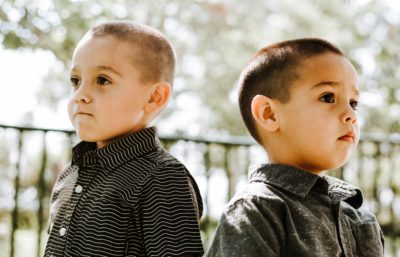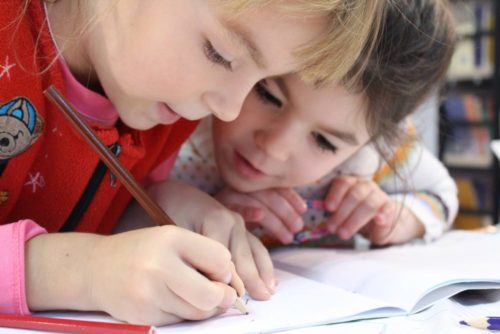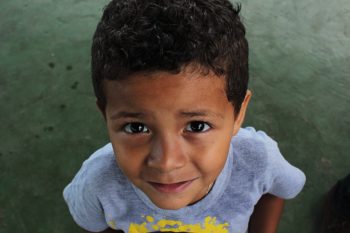 The use of artificial intelligence (AI) is becoming increasingly widespread throughout the education system, but there are mixed attitudes about whether or not it’s actually helpful. While students tend to view the technology positively, a significant number of teachers, principals and district leaders report otherwise, with 52% of education professionals expressing a need to better educate their students on AI use.
The use of artificial intelligence (AI) is becoming increasingly widespread throughout the education system, but there are mixed attitudes about whether or not it’s actually helpful. While students tend to view the technology positively, a significant number of teachers, principals and district leaders report otherwise, with 52% of education professionals expressing a need to better educate their students on AI use.
With such a mixed bag of responses to the technology, how exactly do we discern whether AI use is beneficial to learners? In this guide, we take a look at how AI might be helpful or harmful to college students.
Helpful: aids learning
Thanks to AI, educators no longer have to rely on a one-size-fits-all approach when it comes to teaching, as the technology can be used to develop tailored learning plans to suit each individual student’s needs. Educators might want to use AI to grade a student’s work in a way that connects with them or tailor learning content in a way that each student will respond more positively to – for example, switching written content to audio, or sharing visual learning resources.
In their own time, college students might use AI to aid in their research. At just the click of a button, they can find the relevant data that they’d usually have to spend time trawling the internet for. It can also be utilized as a creative tool, to inspire research proposals, essay titles and outlines. Plus, familiarizing themselves with AI technology may be beneficial in itself to students, as they’re likely to encounter it later on as they head into the working world.
Helpful: could support mental health
By using AI to aid with college work, students can significantly reduce the time they spend on the menial tasks that have no real impact on their learning. This could reduce the number of tasks that need to be completed in preparation for projects and exams, ensuring they have more time to focus on those that boost their learning.
As a result of utilizing AI in this way, we could see a significant reduction in exam and deadline-related stress, as students are better able to stay on top of their workloads. It’s fair to assume this would ultimately have a positive impact on their overall mental health as a result.
Harmful: can be used unethically
Plagiarism can be a problem when it comes to AI use. AI relies on existing web content to generate its content and data – so students need to be careful that they’re not copying AI-generated content word for word, to avoid severe penalties at college.
Similarly, students might become overly reliant on AI technology to do their work for them. Not only does this leave them at risk of committing plagiarism, it can also mean they suffer gaps in their learning and knowledge retention as a result.
Weighing up the pros and cons
Rather than avoiding AI use, it’s best to familiarize students with the technology as early as possible. AI is used widely in the working world, so ultimately, students will need to be introduced to it at one point or another, and educated on how to use it in a way that is beneficial.
When used appropriately, it’s clear that AI has many benefits. Of course, caution should always be taken to ensure that it’s being used responsibly, particularly as AI continues to innovate and evolve. By better educating students on AI and its uses while they’re in school, we can equip young adults with the skills they need to utilize the technology positively as they head into college.
Go to www.theimagineproject.org for more important information about mental health and our youth.
Thank you,
Dianne
Dianne is the founder and CEO of The Imagine Project, Inc., a nonprofit organization that helps children K-12 (and adults) process and heal from difficult life circumstances through expressive writing. Dianne has her Masters in Psychiatric/Mental Health Nursing, is a thought leader in stress and trauma in children and has written multiple award-winning books including The Imagine Project: Empowering Kids to Rise Above Drama, Trauma, and Stress. She is an international speaker, lives in Colorado and has 3 grown children. Learn more about The Imagine Project at www.theimagineproject.org.

 All educators are anxiously awaiting what this fall might look like. Some still aren’t sure if kids will be in the classroom or virtual—and things could change quickly. Most students are also feeling anxious, not really knowing what school will look like in the fall. Some are anxious about possible changes, leaving home, being around other kids, wearing masks/not wearing masks, etc. Students will need extra emotional support from their teachers, counselors, and admin as they navigate this new territory. How can you help?
All educators are anxiously awaiting what this fall might look like. Some still aren’t sure if kids will be in the classroom or virtual—and things could change quickly. Most students are also feeling anxious, not really knowing what school will look like in the fall. Some are anxious about possible changes, leaving home, being around other kids, wearing masks/not wearing masks, etc. Students will need extra emotional support from their teachers, counselors, and admin as they navigate this new territory. How can you help?
 Laughter, running, jumping, being silly, twirling, smiling, creating—all are part of play and having fun! Instinctively, as parents and teachers, we know the importance of play for our kids (and ourselves)—it gives them/us a welcome break from stress and promotes mental health. Yet, we often put play last after homework, sports, jobs, and the constant daily routines of life. The American Academy of Pediatrics promotes play as essential to a child’s development because research shows that it improves learning, cognitive awareness, physical, social, and emotional wellbeing. Fortunately, play is making a comeback because we are remembering how critical it is to healthy brain and body development. Play gives kids tremendous learning opportunities, including how to work with others, manage feelings, think, plan, make decisions, and read other people’s emotions. Play also promotes physical fitness, creativity, self-expression, self-regulation, and healthy boundaries—basically physical and emotional wellness and mental health!
Laughter, running, jumping, being silly, twirling, smiling, creating—all are part of play and having fun! Instinctively, as parents and teachers, we know the importance of play for our kids (and ourselves)—it gives them/us a welcome break from stress and promotes mental health. Yet, we often put play last after homework, sports, jobs, and the constant daily routines of life. The American Academy of Pediatrics promotes play as essential to a child’s development because research shows that it improves learning, cognitive awareness, physical, social, and emotional wellbeing. Fortunately, play is making a comeback because we are remembering how critical it is to healthy brain and body development. Play gives kids tremendous learning opportunities, including how to work with others, manage feelings, think, plan, make decisions, and read other people’s emotions. Play also promotes physical fitness, creativity, self-expression, self-regulation, and healthy boundaries—basically physical and emotional wellness and mental health! Unfortunately, we live in a world where trauma happens. It might be a school shooting, a natural disaster, or a significant loss of a student, teacher, or admin, but it happens more often that we’d like. I recently sat in with a classroom of 4thgraders who lost a fellow schoolmate to a fatal disease—a significant school trauma. Their journey in understanding what happened is complicated, but I was grateful to be there to help them through it using The Imagine Project.
Unfortunately, we live in a world where trauma happens. It might be a school shooting, a natural disaster, or a significant loss of a student, teacher, or admin, but it happens more often that we’d like. I recently sat in with a classroom of 4thgraders who lost a fellow schoolmate to a fatal disease—a significant school trauma. Their journey in understanding what happened is complicated, but I was grateful to be there to help them through it using The Imagine Project. Stress is a normal, unavoidable part of life. It’s actually good for a child to experience small amounts of manageable stress, such as frustration with learning a new skill, dealing with being late to a birthday party due to traffic, or worrying about saying the wrong line in a school play. Learning to deal with the minors stressors of life as a child, when a parent is around to teach them healthy coping skills, will support them as they grow and face more difficult life challenges.
Stress is a normal, unavoidable part of life. It’s actually good for a child to experience small amounts of manageable stress, such as frustration with learning a new skill, dealing with being late to a birthday party due to traffic, or worrying about saying the wrong line in a school play. Learning to deal with the minors stressors of life as a child, when a parent is around to teach them healthy coping skills, will support them as they grow and face more difficult life challenges. Tis that time of year again; teachers are trying not to think about going back to school—but, unfortunately, it’s creeping up on your horizon. There are mixed feelings about the up and coming new school year; excitement, dread, curiosity, doubt, hope, and worry are just a few. Where does a teacher begin when he or she is planning for their future 8-10 months with students? How about writing your Imagine Intentions for the school year?
Tis that time of year again; teachers are trying not to think about going back to school—but, unfortunately, it’s creeping up on your horizon. There are mixed feelings about the up and coming new school year; excitement, dread, curiosity, doubt, hope, and worry are just a few. Where does a teacher begin when he or she is planning for their future 8-10 months with students? How about writing your Imagine Intentions for the school year?

